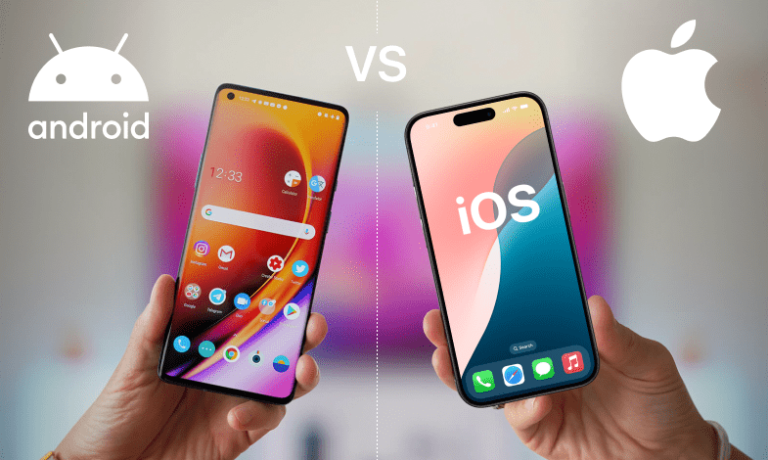iOS and Android are the two main operating systems for tablets or smartphones. They both let you do similar things, like making calls, using apps, and browsing the internet. However, there are some key differences between them. Let’s take a closer look at what makes iOS and Android unique.
Philosophy Behind iOS and Android
iOS:
Developed by Apple.
Aimed at providing a smooth and cross-connected experience across all devices
Apple controls everything: the hardware (the devices), the software (the operating system), and the app store.
This creates a more closed and controlled environment.
Android:
Developed by Google.
Open-source means that other companies can use and change their operating systems.
This leads to a more customisable system in a variety of devices at different price points.
User Interface (UI)
iOS:
Known for its minimalist and streamlined design.
Focuses on simplicity and ease of use.
Android:
Offers a highly customisable user interface.
Provides more options for personalization and customization.
App Stores
iOS:
Apps are only available on the Apple App Store.
The App Store is very selective and strict about the apps it allows, which means higher quality but fewer choices.
Android:
Apps are accessible on the Google Play Store and even on some third-party app stores.
The Google Play Store has more lenient guidelines, offering a wider range of apps but with varying quality.
Control Over Devices
iOS:
More restricted and locked down.
Users have less control over what they can do with their devices.
Android:
More open and customisable.
Users have more control and can customise their devices more easily.
Security
iOS:
Known for strong security due to Apple’s strict app guidelines and the closed nature of the ecosystem.
Generally considered more secure.
Android:
Has made significant improvements in security over the years.
Now, it is considered more secure than it used to be, but it is still not as tightly controlled as iOS.
Gaming, VR, and AR
Apple and Google have tried to improve gaming and VR/AR technology on their mobile operating systems. Both platforms have large libraries of games, ranging from casual to near-console quality. They also offer subscriptions for accessing games without buying each one individually.
Apple’s Arcade and Android’s Google Play Pass both cost $4.99 per month and are ad-free. Play Pass includes some non-game apps from lesser-known developers. Although Google Stadia, Google’s game streaming service, is no longer available, it was an interesting part of the Google ecosystem.
VR and AR Capabilities
iOS:
The iOS App Store has a good selection of VR apps and games compatible with certain VR headsets.
Apple continuously improves its ARKit technology for augmented reality (AR) apps, which bring 3D objects into the real world.
The upcoming Apple Vision Pro could push VR technology into the mainstream when it launches in 2024.
Android:
Google has stopped its Daydream VR and Tango AR projects, but it is still developing ARCore technology for AR apps.
Google offers various VR projects for developers to build apps.
The Camera app’s Playground mode features 3D animations, and Google Lens uses AR to provide information about nearby places for shopping and dining.
You can still use VR on Android devices with Google Cardboard.
Gaming on iOS and Android
iOS:
Apple has significantly focused on gaming across its devices, including iPhones.
High-quality games like Death Stranding: Director’s Cut and Resident Evil 4 Remake are now available on Macs and iPhone 15.
These games are linked to your Apple account and work across multiple Apple devices, making gaming more convenient.
Android:
While Android offers a vast array of games through Google Play Pass, it does not have as many high-profile game releases as iOS.
Conclusion
iOS and Android have different philosophies, designs, and approaches to mobile operating systems. iOS offers a controlled system that focuses on simplicity and ease of use. In contrast, Android provides an open and customizable system with more options for personalization. Both have their pros and cons, and the choice between the two depends on what you need and prefer in a smartphone or tablet.

